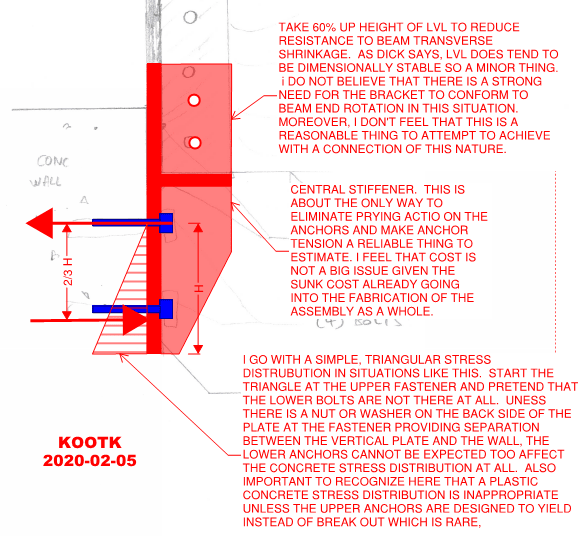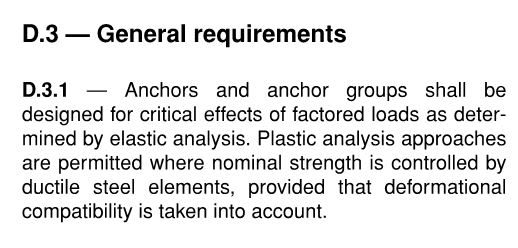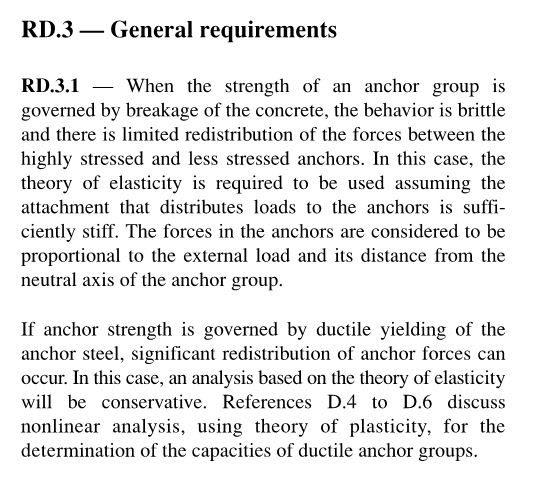Vrpps EIT
Structural
- Aug 21, 2018
- 58
Hi All,
Attached a detail, where a steel saddle is welded to a plate which in turn is fastened to Concrete wall with anchors. As the saddle is welded to plate it creates a moment there also the plate at the top (1/3) is left free as the concrete wall is below the top height of the plate.
1. In this scenario should the plate be checked for its bending capacity as it experiences a tensile pull at the top duet to the moment, if so how to calculate the resisting moment capacity there?
2. Irrespective of it should it be restrained at the top free part by connecting it back to the foundation wall with the gusset plate?
3. I hope the bolts here are only for shear transfer? or does it have to be checked for its tensile and pull out capacity caused by the moment at the top
Thank you guys!
Attached a detail, where a steel saddle is welded to a plate which in turn is fastened to Concrete wall with anchors. As the saddle is welded to plate it creates a moment there also the plate at the top (1/3) is left free as the concrete wall is below the top height of the plate.
1. In this scenario should the plate be checked for its bending capacity as it experiences a tensile pull at the top duet to the moment, if so how to calculate the resisting moment capacity there?
2. Irrespective of it should it be restrained at the top free part by connecting it back to the foundation wall with the gusset plate?
3. I hope the bolts here are only for shear transfer? or does it have to be checked for its tensile and pull out capacity caused by the moment at the top
Thank you guys!




